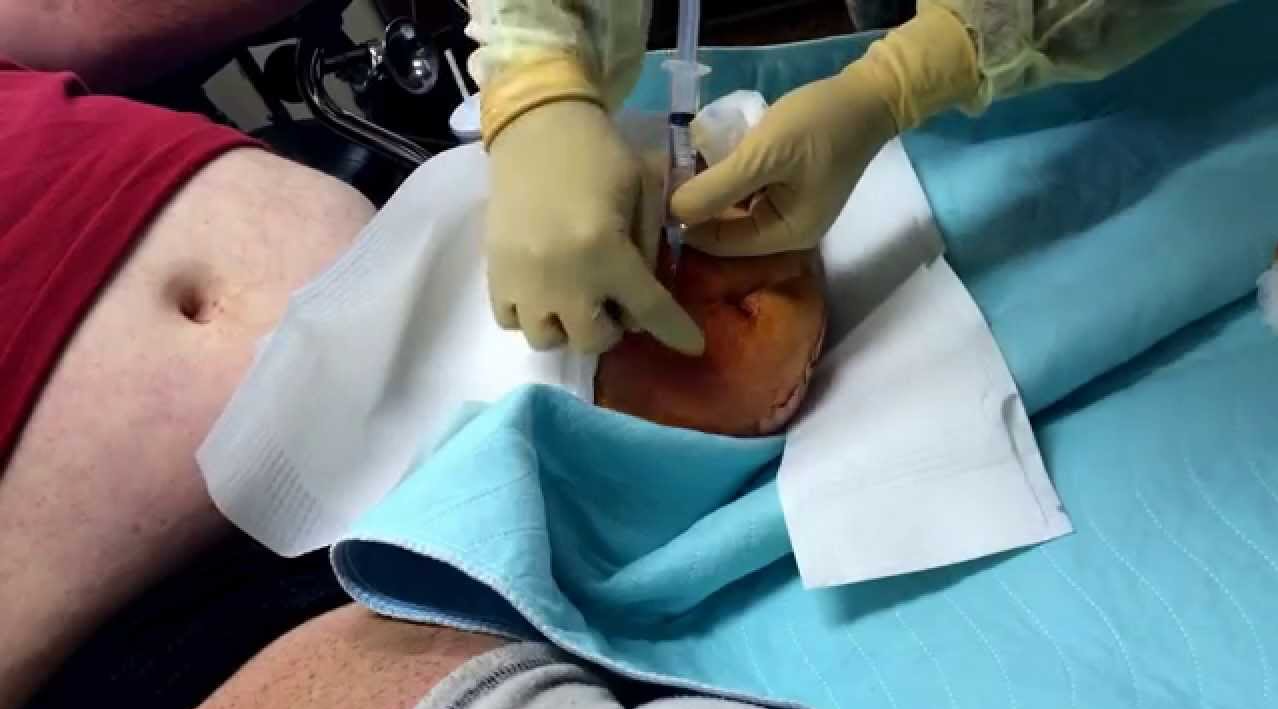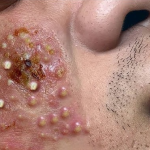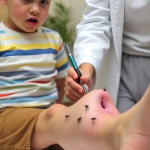Abscess in left stump drainage
lease scroll down to watch the video.👇👇
Abscess drainage in a left stump (such as a leg or arm stump after amputation) is a serious medical condition that requires urgent clinical management by a healthcare provider. Here’s a detailed explanation of how it’s typically treated, including references to clinical standards:
⚠️ What Is an Abscess in a Limb Stump?
An abscess is a localized collection of pus resulting from infection, which can occur in an amputated stump due to:
-
Poor wound healing
-
Bacterial infection (e.g., Staphylococcus aureus)
-
Retained foreign material or necrotic tissue
-
Prosthetic irritation
This condition is painful, can delay prosthetic fitting, and in severe cases, may lead to sepsis if untreated.
🩺 Symptoms of a Stump Abscess
-
Redness, swelling, and heat in the stump
-
Localized or deep pain
-
Pus or fluid discharge
-
Fever and chills (if systemic infection)
-
Bad odor
-
Increasing difficulty with prosthetic use
🏥 How It’s Treated: Step-by-Step
1. Clinical Assessment
-
Visual and palpation exam
-
Imaging (Ultrasound or CT scan) to determine depth/extent
-
Blood tests (CBC, CRP, cultures)
2. Incision and Drainage (I&D)
Performed under local or general anesthesia:
-
A sterile incision is made at the most fluctuant (soft, pus-filled) area.
-
Pus is drained completely; samples may be sent for microbiology.
-
Irrigation of the abscess cavity with saline or antiseptic solution.
-
In some cases, a drain (like a Penrose or closed suction drain) is left in place temporarily.
-
Debridement (removal of necrotic tissue) may be needed for deep or chronic abscesses.
📚 Reference:
-
UpToDate: Management of skin abscesses in adults
-
Campbell’s Operative Orthopaedics (14th Ed): Amputation complications and management
3. Antibiotic Therapy
-
Empiric antibiotics started immediately (e.g., IV Vancomycin + Piperacillin-Tazobactam), tailored after culture results.
-
Oral antibiotics may follow after initial IV therapy.
4. Wound Care
-
Daily dressing changes
-
Negative-pressure wound therapy (NPWT or wound VAC) may help for deep infections
5. Follow-Up
-
Monitor for signs of healing and infection resolution
-
Evaluate for recurrence or chronic osteomyelitis
-
Rehabilitation team assesses when safe to resume prosthetic use
🚫 Do Not Attempt at Home
Abscess drainage must be performed by trained medical personnel. Attempting to drain a stump abscess at home could result in:
-
Worsening infection
-
Tissue damage
-
Sepsis or systemic spread
🔄 Prevention
-
Keep stump clean and dry
-
Inspect stump daily for redness, swelling, or skin breakdown
-
Ensure proper prosthetic fit to avoid pressure sores
-
Routine follow-up with a prosthetist and wound care specialist
📚 Clinical References:
-
Campbell’s Operative Orthopaedics, 14th ed.
Managing an abscess in a residual limb (stump) requires prompt medical attention to prevent complications such as systemic infection or delayed prosthetic rehabilitation. Here’s a detailed overview of the standard treatment approach:
🩺 Clinical Evaluation and Diagnosis
Assessment Steps:
-
Physical Examination: Inspect for signs of infection, including redness, swelling, warmth, tenderness, and purulent discharge.
-
Imaging: Utilize ultrasound or MRI to determine the extent of the abscess and to check for deeper infections or osteomyelitis.
-
Laboratory Tests: Obtain blood tests to assess for systemic infection and collect pus samples for culture and sensitivity to guide antibiotic therapy.
🛠️ Surgical Management: Incision and Drainage (I&D)
Procedure:
-
Preparation: Clean the skin around the abscess with an antiseptic solution such as povidone-iodine or chlorhexidine.
-
Anesthesia: Administer local or general anesthesia based on the abscess’s size and depth.
-
Incision: Make a surgical incision over the most fluctuant area to allow pus to drain.
-
Drainage: Allow the pus to evacuate completely.
-
Irrigation: Flush the abscess cavity with sterile saline to remove any remaining debris.
-
Debridement: Remove any necrotic tissue to promote healing.
-
Drain Placement: Insert a drain, such as a Penrose or Jackson-Pratt drain, to prevent fluid accumulation and facilitate ongoing drainage.
-
Wound Care: Apply appropriate dressings and plan for regular changes to promote healing.
This procedure is often performed in an operating room setting, especially for deep or extensive abscesses.
💊 Antibiotic Therapy
Guidelines:
-
Empiric Therapy: Initiate broad-spectrum intravenous antibiotics targeting common pathogens like Staphylococcus aureus, including MRSA, pending culture results.
-
Culture-Guided Therapy: Adjust antibiotics based on culture and sensitivity results to ensure effective treatment.
-
Duration: The length of antibiotic therapy depends on the severity of the infection and the patient’s response to treatment.
In cases of suspected osteomyelitis, a bone biopsy may be necessary to identify the causative organism and guide therapy.
🩹 Postoperative Care and Rehabilitation
Key Components:
-
Wound Monitoring: Regularly assess the surgical site for signs of healing or recurrent infection.
-
Dressing Changes: Change dressings as recommended to maintain a clean environment and promote healing.
-
Prosthetic Use: Delay prosthetic fitting until the infection has resolved and the wound has adequately healed.
-
Physical Therapy: Engage in rehabilitation exercises to maintain strength and mobility during recovery.
A multidisciplinary approach involving surgeons, infectious disease specialists, and rehabilitation professionals is essential for optimal recovery.
⚠️ Prevention Strategies
-
Hygiene: Maintain proper stump hygiene to prevent infections.
-
Skin Inspection: Regularly inspect the stump for signs of skin breakdown or infection.
-
Prosthetic Fit: Ensure that prosthetic devices fit correctly to avoid pressure sores and skin irritation.
-
Prompt Treatment: Seek immediate medical attention for any signs of infection or skin injury.
Proper wound care and monitoring are crucial in preventing stump infections.
-


